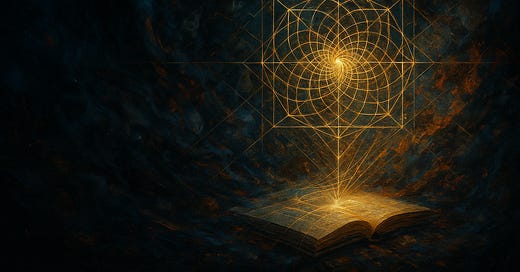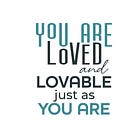Stories As The Pathway to Meaning
Engaging in the divinely gifted, creative act of seeing and shaping order from chaos
There was a time in my life when I envied pain. Not because I wanted to suffer, but because I saw what suffering had produced in people I loved…depth, empathy, clarity. Their wounds gave them access to a kind of meaning I didn’t feel like I had. It showed up in how they comforted others, in the credibility of their perspective. It was like pain had handed them the key to a deeper world. And I wondered if you could even find that kind of meaning without having passed through a major fire.
But over time, I started to notice something. While I didn’t have a single, defining source of pain, I had fragments like betrayal, disappointment, unmet needs, and relational wounds that were subtle but real. And I had proximity to deeper suffering in others. And perhaps more than anything, I had the ability to see patterns. I began to recognize that story, not pain, was the real key to meaning. Pain is just one kind of raw material. Story is what turns it into something useful, something beautiful. And meaning is what emerges when the story is flexible enough to hold all of it—the joy, the pain, the boredom, the beauty.
For me, the shift came through a realization: I wasn't the one living the most dramatic story…but I might be someone who could empathetically see and feel many stories. Hold them. Curate them. I could draw together the perspectives, the suffering, the triumph, the paradox... and make it mean something. That became my story.
But it didn’t come easily. For a long time, I didn’t feel like I had the right to need a story. So much of the language of the Bible, the Gospel and in the church I grew up in, seemed directed toward the desperate, oppressed, broken, grieving and publicly unraveling. I wasn’t any of those things. I had pain, sure, but it didn’t feel like the kind that counted. So I stayed quiet. I watched others be met in their sorrow, unsure if I was needed in that type of redemption story.
But even in that quiet, a more personal story was forming. Something that could give me purpose and a part to play. Slowly, through relationships that didn’t always resolve cleanly. Through love that came with tension, and truth that came with contradiction. The people closest to me were shaping and continue to shape something in me by contrast.
By a father who carries generational wounds but fights to transcend them. By a mother who offers a faith that isn’t performative but deep and quiet. By siblings who challenge me. By friends across the political, cultural and societal spectrum who expand me. By a marriage defined by polarity, and children who carry wildly different gifts. Living among people I loved who often saw the world through very different lenses, I began to notice something. The tension and paradox that felt unbearable to others (because their stories didn’t have room for it) felt like familiar territory to me. My story had been making space for contradiction for years. Not to fix it, but to hold it. To learn from it. To relate to it. To share it. And somehow, that gave me peace where others found only pressure.
The more I leaned into this story, the more it began to reinterpret the past, shape the present and give structure to decisions that effect my future. I saw why I could connect with both my conservative father and my progressive brother. Why I found peace in nuance when others demanded clarity. Why the scientific world thrilled me with its patterns and tensions, and why career choices that required bridge-building always felt like home.
Did I discover this story? Or did I create it? I think it’s a dance. We shape the stories that shape us. And the meaning they create is not an accident.
Because meaning is not something we stumble upon. It’s something we create. Meaning is the interpretation of inputs through a story-shaped mind. The world offers us raw material like light, sound, memory and pain, but it doesn’t tell us what to make of it. Red is just a frequency of light until the brain receives the signal and consciousness turns it into color. The same is true for experience. Events don’t become meaningful until our minds begin to shape them.
Until a story tells us what they are.
We can’t thrive without the meaning that comes from stories. But we can live inside stories that quietly undo us. Stories that reduce us, accuse us, cut us off. And when the story can’t hold the weight of what we’ve lived through, we start to come apart. Not just from pain itself, but from the sense that we can’t find a container that can hold it and bring meaning to it.
That’s what a personal story is. It’s the vessel that lets us reframe pain, find perspective in chaos, and move forward with direction. Effective stories are not fixed. They creatively adapt. They restructure the past while morphing with the future. And they give the present something to stand on. Flexible stories survive. Rigid stories collapse. This was one of the reasons I developed the simplified parenting framework or story container that I outlined more thoroughly in my Substack article below. It’s the kind of container for stories that validate who we are, calls us into what we’re capable of, and leaves space for who we’re still becoming.
This is what most of our cultural stories get wrong. We’ve become lazy storytellers, outsourcing the creative act of flexible stories to pre-packaged, rigid narratives. Political ideologies and many religions hand us scripts: Here’s what to believe. Here’s who to blame. Here’s what your life means. It’s easy. It’s digestible. It even feels deep... until chaos breaks through.
This is also where we confuse inputs with stories. Pain is real. So is success. But they aren’t stories themselves. They’re elements within a story. When pain is left uninterpreted without purpose, or allowed to fuel bitterness and resentment as the destination, it hardens into identity. It becomes the whole plot. Same with success. Both can masquerade as meaning, but without fitting into a bigger more comprehensive story, they remain hollow and destructive. Powerful ingredients, yes... but not the recipe.
And the same is true for pleasure. Our culture has made dopamine the destination. As if happiness were something you find, not something that finds you once the story is in place. But these jolts of pleasure are just data. Without a story, the pursuit becomes a subconscious, autonomous full-time job—and an exhausting one. Because pleasure doesn’t know what to do with the rest of life. Joy does. Joy is flexible. It can coexist with sorrow. It knows how to hold tension. Pleasure can’t do that. And so we suffer without the meaning that makes it bearable.
Music is an interesting metaphor that makes a lot of sense to me. Sound is chaos. But music is ordered chaos. It’s the story we impose on the noise. That’s why we love it. That’s why it moves us. It’s a mirror of what our minds are trying to do every day with fragmented experiences: organize it all into something beautiful and meaningful. Something whole.
About fifteen years ago, I told a friend I felt like a fraud for leading music without writing my own songs, a skill I just couldn’t master. He told me about a museum curator he knew and how they had talked about this concept. The curator didn’t create the art. He created the experience. He chose what to display, how to frame it, how to guide people through the gallery so the meaning from the art would emerge. He had to understand art, and perhaps even be able to copy it, but he didn’t have to produce it. That changed everything for me. I saw what I was doing with worship. And later, with writing. With work. With life.
You don’t have to be the artist. You don’t have to be the one who bled to understand what blood can do. We need curators. Story-guides. People who can weave the raw inputs of a wide variety of life experiences into a path that others can walk via a story they can embrace.
And ultimately, the best stories are never self-contained. They don’t just explain your life; they connect it to something bigger. The best stories join with other stories. They find resonance. They become communal. They transcend.
That’s why I believe the most enduring universal story I know—the one that holds all the others, including my own personal story—is the story from Creation to Communion, built upon the framework provided in the Bible, as I explored more deeply in my Substack article of the same name:
It’s the flexible arc that allows me to reinterpret my life, the life of everyone else and all of creation into a single story. It doesn’t reject the chaos. It holds it. It doesn’t require closed certainty or selfish control. It invites open wonder and relational acceptance of what is. And it draws my little story, and everyone else’s stories, into something larger than all of us.
A symphonic order emerging from the seemingly disparate inputs of individual experiences.
I still don’t know if I created these stories or found them. Maybe both. But I know this: I’m not alone in them. And neither are you. Meaning is waiting and joy is available to all. But it doesn’t come pre-written. It comes in fragments, glimpses, echoes... until one day we realize we’re not just reading a story. We’re becoming one.





